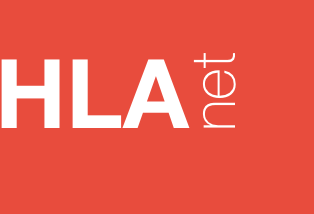Int. J. Immunogenetics 39(6) 459–476, December 2012
Strategies to work with HLA data in human populations for histocompatibility, clinical transplantation, epidemiology and population genetics: HLA-NET methodological recommendations
Sanchez-Mazas A, Vidan-Jeras B, Nunes JM, Fischer G, Little A-M, Bekmane U, Buhler S, Buus S, Claas F, Dormoy A, Dubois V, Eglite E, Eliaou J-F, Gonzalez-Galarza F, Grubic Z, Ivanova M, Lie B, Ligeiro D, Lokki M-L, Martins da Silva B, Martorell J, Mendonça D, Middleton D, Papaioannous Voniatis D, Papasteriades C, Poli F, Riccio ME, Spyropoulou Vlachou M, Sulcebe G, Tonks S, Toungouz Nevessignsky M, Vangenot C, van Walraven A-M & Tiercy J-M
Abstract
HLA-NET (a European COST Action) aims at networking researchers working in bone marrow transplantation, epidemiology and population genetics to improve the molecular characterization of the HLA genetic diversity of human populations, with an expected strong impact on both public health and fundamental research. Such improvements involve finding consensual strategies to characterize human populations and samples and report HLA molecular typings and ambiguities; proposing user-friendly access to databases and computer tools and defining minimal requirements related to ethical aspects. The overall outcome is the provision of population genetic characterizations and comparisons in a standard way by all interested laboratories. This article reports the recommendations of four working groups (WG1-4) of the HLA-NET network at the mid-term of its activities. WG1 (Population definitions and sampling strategies for population genetics’ analyses) recommends avoiding outdated racial classifications and population names (e.g. ‘Caucasian’) and using instead geographic and/or cultural (e.g. linguistic) criteria to describe human populations (e.g. ‘pan-European’). A standard ‘HLA-NET POPULATION DATA QUESTIONNAIRE’ has been finalized and is available for the whole HLA community. WG2 (HLA typing standards for population genetics analyses) recommends retaining maximal information when reporting HLA typing results. Rather than using the National Marrow Donor Program coding system, all ambiguities should be provided by listing all allele pairs required to explain each genotype, according to the formats proposed in ‘HLA-NET GUIDELINES FOR REPORTING HLA TYPINGS’. The group also suggests taking into account a preliminary list of alleles defined by polymorphisms outside the peptide-binding sites that may affect population genetic statistics because of significant frequencies. WG3 (Bioinformatic strategies for HLA population data storage and analysis) recommends the use of programs capable of dealing with ambiguous data, such as the ‘gene[rate]’ computer tools to estimate frequencies, test for Hardy–Weinberg equilibrium and selective neutrality on data containing any number and kind of ambiguities. WG4 (Ethical issues) proposes to adopt thorough general principles for any HLA population study to ensure that it conforms to (inter)national legislation or recommendations/guidelines. All HLA-NET guidelines and tools are available through its website http://hla-net.eu.
